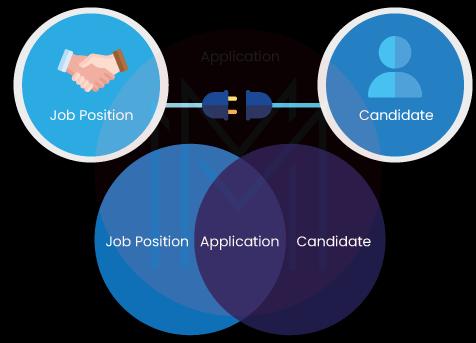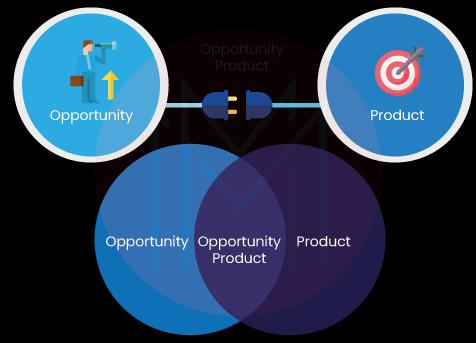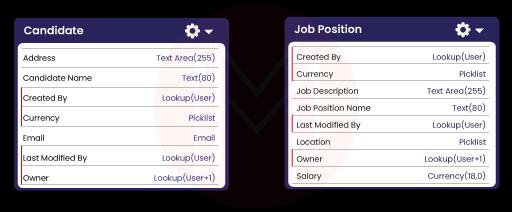- Home
- Blog
- Salesforce
- What is Junction Object In Salesforce?

- Apex Class in Salesforce
- Approval Process In Salesforce
- Step By Step Guide to Becoming a Certified Salesforce Developer
- Bulkification in Salesforce
- Code Coverage In Salesforce
- Context Variables In Salesforce
- Controller Extension in Salesforce
- Controlling the program flow in Salesforce
- How To Create Data Modeling In Salesforce?
- Custom Controller in Salesforce
- Custom Reports In Salesforce
- DML Operations In Salesforce
- Top 10 Features of Salesforce Lightning
- Governor Limits in Salesforce
- How Salesforce Certification Can Boost Your Career?
- Salesforce Lookup Relationship
- Master-detail Relationship in Salesforce
- User Management And Object Level Security In Salesforce
- Price Book in Salesforce CPQ
- Product Bundle in Salesforce CPQ
- Quote Line Editor In Salesforce CPQ
- Why Learn Salesforce?
- Record Level Security In Salesforce
- Report Building in Salesforce
- Salesforce Automation Testing With Selenium
- Salesforce Collection of Map
- Salesforce Collection of Set
- Salesforce CPQ Implementation Guide
- Salesforce CPQ Tutorial
- How to create dashboard in Salesforce
- Salesforce Developer Certification, Jobs And Salary Trends
- An Overview of Salesforce Development Environment
- Salesforce Interview Questions
- Salesforce Lightning Interview Questions
- Salesforce Lightning Tutorial
- Salesforce Enhances Its Marketing Cloud With AI And Google Partnership
- Salesforce Job Roles And Certifications
- Salesforce Tutorial
- Salesforce vs ServiceNow
- Salesforce Vs Siebel CRM'S
- Access Specifiers in SalesForce Cloud Computing - Salesforce
- An Introduction to Exception Handling – SalesForce
- An Introduction to Visualforce – SalesForce
- An Overview of Salesforce Security
- Annotation in SalesForce
- Classes, Inheritance and Overriding in SalesForce
- Configuring Salesforce Web-To-Lead Form
- Creating Visualforce Page using AJAX Programming - Salesforce
- How to Create Field Dependence in SalesForce
- How to Create Sample Apex Trigger in SalesForce
- How to Define Validation Rules in SalesForce
- Object Relationships Overview – SalesForce
- SalesForce Integration and Environment in Cloud Computing
- SalesForce Deployment and Assertions
- Shallow copy and Deep Copy in Cloud Computing - Salesforce
- Security and Audit Trail in Salesforce
- Salesforce SOQL
- SOSL Of Salesforce
- Standard Controller In Salesforce
- Test Class in Salesforce With Example
- Testing APEX In Salesforce
- Time Dependent Workflow Rule - Action
- Trigger Scenarios in Salesforce
- What is CRM? - A Complete Beginners Tutorial
- What is Salesforce Administrator?
- What is Salesforce CRM?
- Why You Should Learn Salesforce Skills
- Workflow Rules In Salesforce
- Configuring Tasks in Workflow Rules
- How to call APEX Class
- Context Variables
- Configuring Email alert in Workflow Rules
- Salesforce Web Services
- Salesforce Vlocity Interview Questions
- Salesforce CPQ Interview Questions
- Visualforce Interview Questions
- Salesforce Tools
- Salesforce Integration Interview Questions
- Custom Settings in Salesforce
- What is Salesforce Database?
- Salesforce Data Loader
- Salesforce Platform Events
- What is Salesforce Marketing Cloud - Definitive Guide
- Bucket Field In Salesforce - Bucket Column Salesforce
- Sharing Rules in Salesforce
- What is Salesforce Architecture?
- Salesforce Projects and Use Cases
- Salesforce Marketing Cloud Integration
- Microsoft Dynamics VS Salesforce
- Salesforce Admin Projects and Use Cases
Salesforce, by default, only permits one-to-many and many-to-one relationships by employing a variety of triggers. But what if an organization tries to access information from both the sales and service teams?
They will be able to accomplish this if granted access to the databases of the sales and support teams through many-to-many relationships or master-detail relationships in Salesforce. This can be done using Salesforce's Junction Object. This blog explores in-depth about what is a Junction object in Salesforce with examples.
Junction Object In Salesforce - Table of Contents
- Introduction to Salesforce
- Relationship Types in Salesforce
- What is Junction Object in Salesforce?
- Examples
- Best Practices
- Points
- How To Create a Junction Object in Salesforce?
- How To Query Junction Object in Salesforce?
Introduction to Salesforce

When it comes to successfully managing resources based on customer behavior, Salesforce is a master at keeping an organization's data linked to its marketing and sales campaigns. Understanding how the Salesforce Data Model operates internally requires knowledge of the Salesforce Junction Objects.
| If you want to enrich your career and become a professional in Salesforce CRM then enroll in "Salesforce Online Training". This course will help you to achieve excellence in this domain. |
Relationship Types in Salesforce
Relationships in Salesforce indicate the connections between two or more objects. We utilize relationships to establish a connection between two objects in Salesforce if we need to relate them such that their functioning depends on one another. The following object relationships are made possible via the Salesforce Platform:
1. Look-Up Relationship
A one-to-many relationship is a look-up relationship. Because the objects in a look-up relationship are only loosely related, the deletion of one object has no bearing on the continued existence of the other.
2. Master-Detail Relationship
One object serves as the Master object in this kind of relationship, and the other one serves as the Detail object. In other words, this relationship is comparable to that of a parent and child. When a Master Data Object's record is erased, the record linked to the Detailed object is also deleted. The Parent record can manage attributes like the visibility of the Child thanks to the Master-Detail Relationship.
3. Self Relationship
Self Relationship is the simple term for an object forming a bond with itself. A smaller campaign being a part of a larger campaign, for instance, illustrates the self-relationship.
4. Many-to-Many Relationship
Records of certain items may be related to numerous instances of other things in a many-to-many relationship, and vice versa. Since Salesforce by default does not support many-to-many relationships, two Master-Detail Relationships tied to a single object can be used to create a many-to-many relationship. Junction Object is a frequent name for this shared item that joins the two relationships.
5. External Relationship
With Salesforce Connect, a new field type was introduced. Utilize the external relationship field to connect one external item to another. It supports all Look-Up Relationships that use the 18-character Salesforce id for the association.
[ Check out How Salesforce Certification Can Boost Your Career ]
What is Junction Object in Salesforce?
You can build Many-to-Many relationships using Junction Objects on the Salesforce platform. The Junction Object is a custom object that enables you to link a custom object with a large number of child records and link each child record to a large number of parent objects. The junction object keeps track of how the two things are connected.
You can take a subset of data from a Junction Object and add data to a Junction Object. However, data upserts are not supported by the Junction Object.
Let’s look at a few examples:
Examples of Junction Object
Consider a hiring procedure when a position is open and a candidate objects. A typical parent-child relationship will not function because it is necessary for applicants to submit applications for many job openings. To enable several people to apply to several open positions, You require a junction object with a name like "Application."

Additionally, one of the typical Salesforce objects provides an example using Opportunity Products. Use the Opportunity Line Items object, which is a junction object, if you want to link Products to a specific Salesforce Opportunity. You could only ever link one product to one opportunity without the Junction Object, thus it's essential.

Best Practices For The Creation of Junction Object in Salesforce
- Primary master refers to the junction object’s first master-detail.
- Secondary master refers to the junction object’s second master-detail.
- Anyone who owns the primary master will also be the owner of the associated child records.
- If anyone deletes the master records, associated child records will also be deleted.
Points to Remember While Creating a Junction Object in Salesforce
- First, you need to customize an object to use it as a junction object. The process involved in object customization differs from edition to edition.
- Also, check whether the related objects exist already.
- Check for the lists in the master object’s page layouts.
- The key objective is to improve the performance of the relationships.
- The process of creating many-to-many relationships is supported only in the following editions: Salesforce Lightning Experience, Salesforce Classic, Contact Manager, Group, Professional, Enterprise, Unlimited, Developed, Performance, and Database.com.
How To Create a Junction Object in Salesforce?
It's easy to design a junction item, and once you've done it once, the idea will come naturally. To simplify matters, I'll use the recruitment procedure mentioned above as an example:
Step #1. First, check to see if the two items you want to join with a junction object are readily available. Job Position and Candidate will be my first two bespoke objects. You can see that these are now disconnected from Salesforce Schema Builder. We require our junction object to guarantee that several candidates can apply for numerous positions.

Step #2. As our junction object, a new custom object must be created as the next stage. We can connect the Job Position objects and Candidate. Thanks to a special object I made called "Job Application."
Step #3. A candidate object and a job position must now be configured as two master-detail relationships in the Job Application object. Create a field on your Job Application object first (as per usual) and then select the proper objects and master-detail relationship field type to achieve this. Returning to the Schema Builder will allow us to verify that our many-to-many junction object is finished.

Step #4. We are now able to allocate many candidates to many employment opportunities thanks to the structure mentioned above. Let's have a look at how Salesforce displays this.

| Check out Top Salesforce Interview Questions and Answers that help you grab high-paying jobs |
How To Query Junction Object in Salesforce?
SOQL (Salesforce Object Query Language) query can access the data from the junction object. The following steps show how to do it:
- First, create a new relationship on Document Package.
- Next, change the ‘Type’ to ‘SOQL’.
- Give the relationship an alias. Make sure it is unique and does not fit the naming convention of any already-existing fields or objects in your Salesforce Org.
- Now, paste the query in the ‘SOQL’ box.
- Make sure to append __r at the end for dot-notated fields like the one below in custom objects.
SELECT lookup_(Object in Junction)api_name__r.field FROM
junction_object_api_name WHERE main_object_api_name__r.id = '<<main_object_record_id_tag>>'Conclusion
The blog described the features and steps for building a Junction Object in Salesforce. If you are a beginner, understanding concepts like these may seem difficult. So, Sign up now for MindMajix’s Salesforce Certification Training to get more insights into the essential Salesforce topics.
If you have any doubts, reach out to us in our MindMajix Community
 On-Job Support Service
On-Job Support Service
Online Work Support for your on-job roles.

Our work-support plans provide precise options as per your project tasks. Whether you are a newbie or an experienced professional seeking assistance in completing project tasks, we are here with the following plans to meet your custom needs:
- Pay Per Hour
- Pay Per Week
- Monthly
| Name | Dates | |
|---|---|---|
| Salesforce Training | Jan 03 to Jan 18 | View Details |
| Salesforce Training | Jan 06 to Jan 21 | View Details |
| Salesforce Training | Jan 10 to Jan 25 | View Details |
| Salesforce Training | Jan 13 to Jan 28 | View Details |

Madhuri is a Senior Content Creator at MindMajix. She has written about a range of different topics on various technologies, which include, Splunk, Tensorflow, Selenium, and CEH. She spends most of her time researching on technology, and startups. Connect with her via LinkedIn and Twitter .















